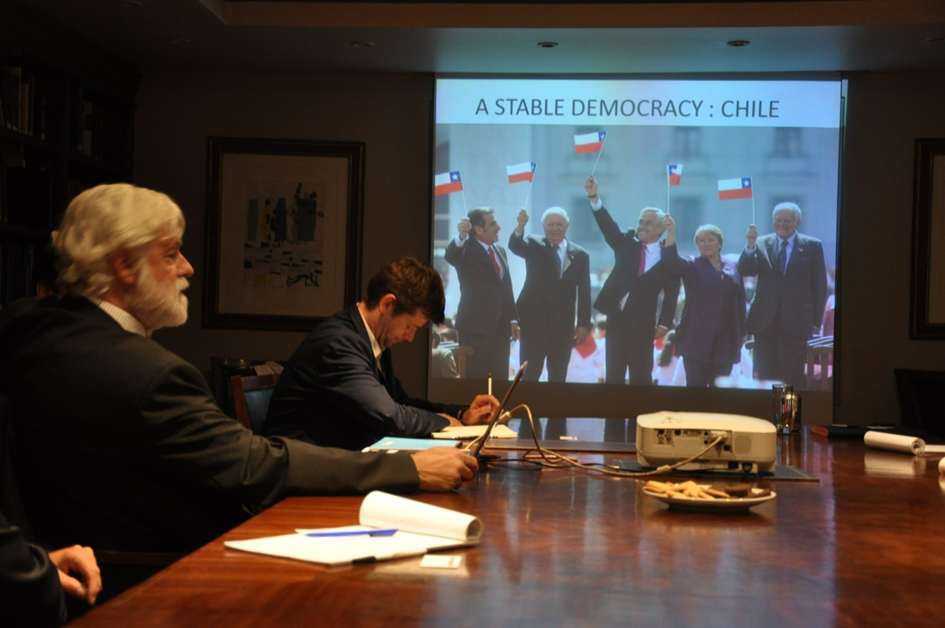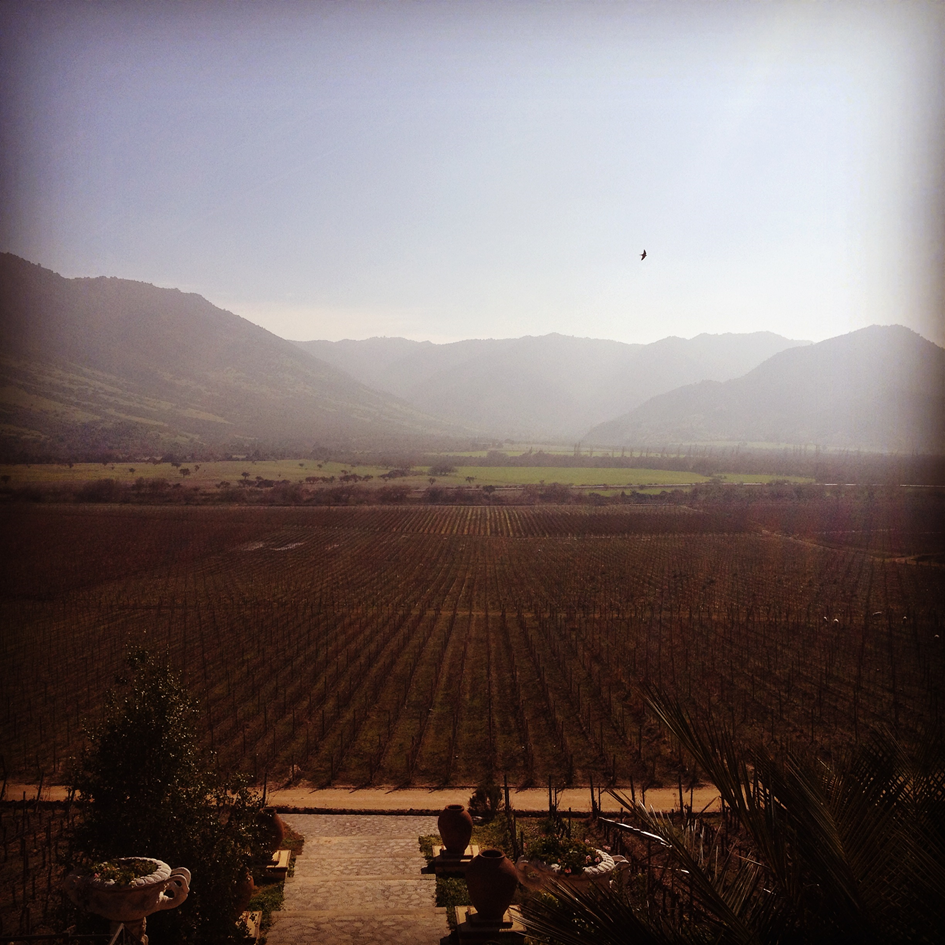Dear Investor,
After our three day visit in Brazil we continued our fieldtrip to Santiago de Chile. This unusual, ribbon-like shaped 4,300 km long country (versus 285 km in Belgium) has a completely different climate than Brazil – and I am not only referring to the macro-economic or private equity climate. Wintertime in Chile means really chilly. The crisp air reminded us about Christmas, while we managed to stay warm by wearing layered summer clothing (very fashionable indeed) and from time to time sipping some Chilean Pisco Sour.
The Chilean part of our visit was hosted by Professor Doctor Eduardo Aninat. Dr. Aninat is a vital member of the Advisory Board of the Buysse & Partners Latin American Growth Fund and the ideal host to introduce our delegation into the ins and outs of Chile. He is a charismatic, highly respected man and when entering a room with him, the looks of appreciation make you feel very honored to be part of his entourage. He was Finance Minister of Chile from 1994 to 1999, Chairman of the Board of Governors of the IMF and World Bank, Ambassador of Chile in Mexico, holds a M.A. and Ph. D. in Economics from Harvard University and has taught at Boston University.
Still teaching the world about macroeconomics, Dr. Aninat is the perfect guide to provide a more critical view on one of South America’s most stable and prosperous nations. Overall, Chile is considered to be the leading Latin American nation in competitiveness, income per capita, globalization, economic freedom and with a very low perception of corruption. Steady growth and sound fiscal & monetary policy lead to a AA- Foreign Currency Rating by S&P (versus AA in Belgium). The privatized and very well organized national pension system has encouraged domestic investment and therefore contributed to the creation of well-established capital markets. Notwithstanding the strong presence of local pension funds in Chilean capital markets, there still is limited exposure to international investors. One of the reasons the country is still quite under the radar might be a cultural one. We found the modesty of the Chileans just striking. And maybe modesty is even their most important flaw, as unknown makes unloved… Other challenges remain in fighting the high economic inequality and diversifying its economy, as it is still highly reliant on copper and other commodities.
Unlike Brazil, which is very much internally oriented, Chile has always been very export oriented and open-minded. The mere proof is the existence of more than 57 bilateral trade agreements. Together with Peru (30MM inhabitants) and Colombia (47MM) – both very promising and stable countries – Chile (17MM) forms the Andean region, which serves a market of almost 100MM people. Most national and international companies consider Chile to be the ideal starting point to hit the Andean region.
Alfredo Guardiola, CEO of Paperless, confirmed this regional expansion and consolidation strategy: from HQ in Santiago to Lima and Bogota. Paperless, a company backed with private equity from Austral Capital, is a first mover in providing digital document processing and processes over 70MM documents per month. We witnessed a similar approach during a company visit at Hortifrut (“Berries for the world every day”), which showed us that Chileans are used to look beyond their borders.
Also the private equity landscape in the Andean region is remarkably different from what we saw in Brazil. In Brazil the mid-market might be young and underpenetrated, but in Chile the private equity sector is even less developed. Interesting deals are still mostly arranged between the Family Offices of some very wealthy Chilean families (42 families have a joint liquid patrimonium of $42 billion, of which the top 4 families represent $28 billion). Therefore local is the keyword when you even think of playing the game. Local presence, local knowledge and a solid network are fundamental. Private equity is gaining importance though, as it is the perfect answer to facilitate growth through a hands-on approach in helping to launch new product lines, improving sales processes and provide capital and support needed to expand geographically.
To end on a personal note; when I was tasting a beautiful Carmenère – Chile’s own signature grape – during our visit in the wine valley, I realized that 1. I have a great job and 2. in my opinion, the best way to create exposure in Latin America is exactly through the combination of both emerging economic blocs with distinctive features and risks, via local teams with our DNA, i.e. Buysse & Partners DNA.
If you are interested to learn more, and you speak Dutch, you can also read the releases of Ben Serrure. Ben is a journalist at the Belgian financial newspaper “De Tijd” and joined us during this fascinating trip. http://blogs.tijd.be/zuidamerika/
Hasta luego,
Mieke




